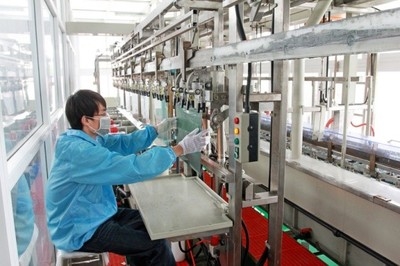
[Aluminum Road Network] I. Preface
After electroplating all kinds of metals on the surface of aluminum and aluminum alloys, the physical or chemical properties of the surface can be significantly improved. When aluminum and aluminum alloys are used as conductors, electroplating silver on the surface can increase the conductivity of the surface or the electrical contact regions; Easy to weld, electroplating copper, nickel or tin on the surface; to improve its wear resistance, it is plated on its surface. In terms of decorativeness, electroplating enamel is mostly used.
The electroplating of aluminum and aluminum alloy surfaces has been tried and used for practical production long ago. However, there are oxides between aluminum and aluminum alloy and the coating. The thermal expansion coefficient of aluminum and aluminum alloy and metal coating are different. The coating has pinholes and residual plating solution and Other factors, resulting in poor adhesion of the coating. When used for a long time, it will peel off or even be plated. Immediately after peeling off, in the field of surface treatment, the electroplating process of aluminum and aluminum alloys is still in the exploratory stage. There has been no substantial breakthrough for a long time, and no perfect and mature technology has been formed so far. The incompatibility of plating is the quality of aluminum and aluminum alloy plating and product qualification rate is still an industry bottleneck.
II. Traditional aluminum and aluminum alloy plating
Aluminum and aluminum alloy electrolysis in the electrolyte can form a coating, but the coating binding force is not strong, easy to peel. Therefore, aluminum can be first deposited in the aqueous solution containing zinc oxide compounds and then electroplating, this method is either zinc displacement or deposition. It is also possible to first obtain a thin porous oxide film on the surface of aluminum and aluminum alloys by anodizing the power supply to perform electroplating.
2.1 General aluminum and aluminum alloy plating process
Aluminum and aluminum alloy electroplating processes are pre-plated, electroplated and post-plated. Pre-plating treatment is a key process related to the quality of electroplating products. Its main purpose is to remove the grease on the surface of aluminum and aluminum alloys, naturally forming oxide film and other dirt.
Conventional general processes are: degreasing-washing-demineralization-washing-pickling-washing-activation-washing-primary zincation-washing-removal-zinc-washing-secondary zincation-washing-neutral nickel-plating-washing- Subsequent plating.
There is also a wave of anodized film instead of zinc immersion process in the subsequent plating.
2.2 Inadequacies in the traditional pretreatment process
1. Long process, many processes.
2. The process is complex, the operating range is narrow, and the process parameters must be strictly controlled.
3. The scope of application of the process is not wide. Different grades of aluminum pretreatment can not be identical, and the pretreatment process must be adjusted according to the grade of aluminum alloy.
4. Under the premise of strictly controlling the pretreatment process, the qualification rate of electroplating products is very low, the pass rate of general decorative electroplating is 85%-90%, and the pass rate of functional electroplating is 60%-70%.
5. Each process solution has a short service life and a short processing cycle.
As the traditional pre-treatment of aluminum and aluminum alloys agrees with the above deficiencies, they must be improved.
III. Improved general-purpose aluminum and aluminum alloy plating pretreatment process
Degreasing alkaline etching 2-in-water-pickling-washing-ashing-washing-alkaline activation-zinc-leaching-washing-neutral nickel-plating-washing-sequential electroplating.
IV. Practice Summary
The new process aims at the actual defects of the current aluminum alloy electroplating, combined with the special physical and chemical properties of the aluminum alloy itself, and it is improved on the basis of the original technology, and the following advantages are specifically:
1. The process flow is short, and the purity of the aluminum alloy surface is improved by selectively dissolving other metals on the surface layer of the aluminum alloy, and the bond strength of the plating layer is improved.
2. Alkaline activation is used to replace the acid activation process to completely remove the residual silicon and silica on the surface of the rate alloy before plating, which effectively improves the adhesion of the coating.
3. After alkaline activation without direct washing and direct zinc immersion, it can avoid the formation of an oxide layer by exposure to air in the acidic activation and secondary zinc immersion.
4. Just a simple zinc immersion can be, the bond strength of the coating is significantly better than the secondary zinc leaching and complex multi-component cyanide leaching zinc process.
5. The versatility of the process is almost used for all types of aluminum alloy plating pretreatment.
6. The one-time pass rate of product electroplating is obviously higher than the traditional one. If the evaluation of the bonding strength of the simple plating is good, the product qualification rate is close to 100%.
7. The actual production process is simple and convenient.
8. The actual production of a large-scale automatic production line for a long time has proved that the improved pretreatment of the new aluminum alloy plating is very stable.
9. Facilitate the process improvement based on the traditional aluminum alloy plating process.
Chengfeng Hardware Co., Ltd. , http://www.hzcurtainrod.com